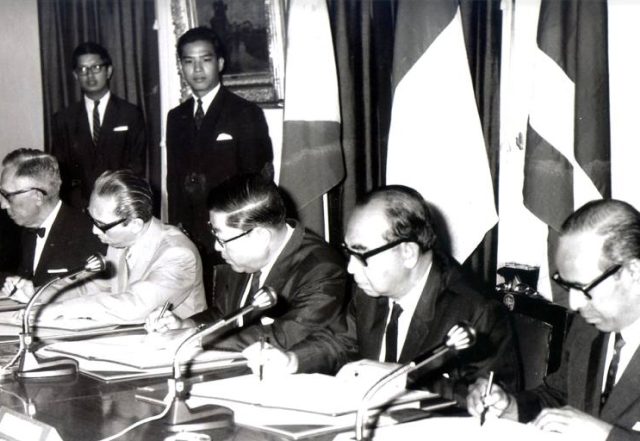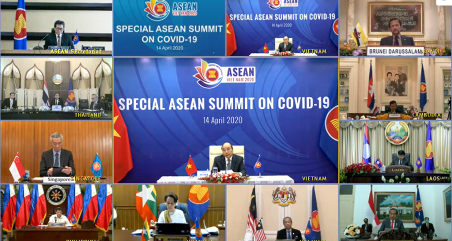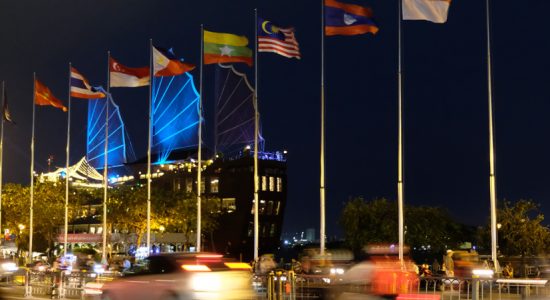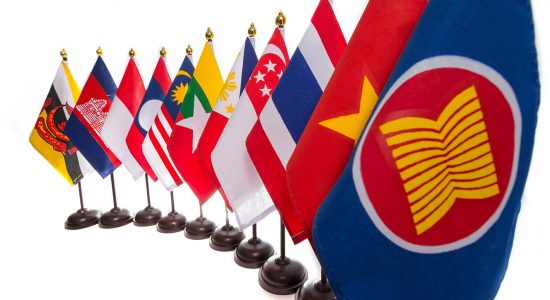About ASEAN
History

The ASEAN Journey
On 8 August 1967, five gentlemen – the Deputy Prime Minister of Malaysia, along with the Foreign Ministers of Indonesia, the Philippines, Singapore, and Thailand – gathered in the main hall of the Department of Foreign Affairs building in Bangkok, Thailand, and signed a document. By virtue of that document, the Association of Southeast Asian Nations (ASEAN) was established. Adam Malik of Indonesia, Narciso R. Ramos of the Philippines, Tun Abdul Razak of Malaysia, S. Rajaratnam of Singapore, and Thanat Khoman of Thailand would later be recognised as the Founding Fathers of arguably the most successful inter-governmental organisation in the developing world today. The document they signed would be known as the ASEAN Declaration.
ASEAN Charter
The ASEAN Charter serves as a firm foundation in achieving the ASEAN Community by providing legal status and institutional framework for ASEAN. It also codifies ASEAN norms, rules and values; sets clear targets for ASEAN; and presents accountability and compliance. The ASEAN Charter entered into force on 15 December 2008 at the presence of ASEAN Foreign Ministers at the ASEAN Secretariat in Jakarta.
With the entry into force of the ASEAN Charter, ASEAN will henceforth operate under a new legal framework and establish a number of new organs to boost its community-building process. In effect, the ASEAN Charter is the legally binding agreement among the 10 ASEAN Member States. It will also be registered with the Secretariat of the United Nations, pursuant to Article 102, Paragraph 1 of the Charter of the United Nations.
The importance of the ASEAN Charter can be seen in the following contexts:
- New political commitment at the top level
- New and enhanced commitments
- New legal framework, legal personality
- New ASEAN bodies
- Two new openly-recruited DSGs
- More ASEAN meetings
- More roles of ASEAN Foreign Ministers
- New and enhanced role of the Secretary-General of ASEAN
- Other new initiatives and changes
ASEAN Summit

ASEAN Coordinating Council

Established in 2008, the ASEAN Coordinating Council (ACC) comprises the ASEAN Foreign Ministers and meets at least twice a year to prepare for the ASEAN Summit. The ACC coordinates the implementation of the mandate of ASEAN Leaders and all cross-pillar initiatives of ASEAN. As stipulated in the Article 8 of the ASEAN Charter, the ACC shall:
- prepare the meetings of the ASEAN Summit;
- coordinate the implementation of agreements and decisions of the ASEAN Summit;
- coordinate with the ASEAN Community Councils to enhance policy coherence, efficiency and cooperation among them;
- coordinate the reports of the ASEAN Community Council to the ASEAN Summit;
- consider the annual report of the Secretary-General on the work of ASEAN;
- consider the report of the Secretary-General on the functions and operations of the ASEAN Secretariat and other relevant bodies;
- approve the appointment and termination of the Deputy Secretaries-General upon the recommendation of the Secretary-General; and
- undertake other tasks provided for in this Charter or such other functions as may be assigned by the ASEAN Summit.

ASEAN Community Councils
The ASEAN Community Councils comprise Council of all the three pillars of ASEAN. Under their purview is the relevant ASEAN Sectoral Ministerial Bodies.
ASEAN Member States

Brunei Darussalam
Commencement Date: 7 January 1984

Cambodia
Commencement Date: 30 April 1999

Indonesia
Commencement Date: 8 August 1967

Lao PDR
Commencement Date: 23 July 1997

Malaysia
Commencement Date: 8 August 1967

Myanmar
Commencement Date: 23 July 1997

Philippines
Commencement Date: 8 August 1967

Singapore
Commencement Date: 8 August 1967

Thailand
Commencement Date: 8 August 1967

Timor Leste
Head of State : His Excellency Jose Ramos-Horta
Head of Government: Prime Minister Kay Rala Xanana Gusmao
Capital : Dili
National Flag : Click Here
- ASEAN Motto -
“One Vision, One Identity,
One Community”
- ASEAN Day -
8 August
is observed as ASEAN Day
ASEAN Flag
Guidelines on the use of the ASEAN Flag
- The ASEAN Flag is a symbol of Member States’ unity and support for the principles and endeavours of ASEAN and is a means to promote greater ASEAN awareness and solidarity.
- The ASEAN Flag represents a stable, peaceful, united and dynamic ASEAN. The colours of the Flag – blue, red, white and yellow – represent the main colours of the flags of all the ASEAN Member States.
- The blue represents peace and stability. Red depicts courage and dynamism, white shows purity and yellow symbolises prosperity.
- The stalks of padi in the centre of the Emblem represent the dream of ASEAN’s Founding Fathers for an ASEAN comprising all the countries in Southeast Asia, bound together in friendship and solidarity.
- The circle represents the unity of ASEAN.
- The ASEAN Flag is the reserved copyright of ASEAN.
- The specifications of the ASEAN Flag are annexed.
ASEAN Emblem


-
The ASEAN Emblem shall be the official emblem of ASEAN.
-
The ASEAN Emblem represents a stable, peaceful, united and dynamic ASEAN. The colours of the Emblem — blue, red, white and yellow — represent the main colours of the state crests of all the ASEAN Member States.
-
The blue represents peace and stability. Red depicts courage and dynamism, white shows purity and yellow symbolises prosperity.
-
The stalks of padi in the centre of the Emblem represent the dream of ASEAN’s Founding Fathers for an ASEAN comprising all the countries in Southeast Asia, bound together in friendship and solidarity
-
The circle represents the unity of ASEAN.
ASEAN Anthem
Guidelines on the Use of the ASEAN Anthem
- The ASEAN Anthem is an expression of ASEAN unity. It also strengthens the sense of ASEAN identity and belonging among the peoples of the region.
- The ASEAN Anthem is titled “THE ASEAN WAY”, with musical composition and lyrics as attached.
- The ASEAN Anthem is under the copyright of ASEAN with the ASEAN Secretariat as the main body to oversee its proper use.
ASEAN Name
The use of the name “ASEAN” aims to promote ASEAN and its purposes and principles as stipulated in the ASEAN Charter. It shall not be used for political propaganda or for activities that harm the dignity and integrity of ASEAN, and adversely affects ASEAN or ASEAN Member States.




